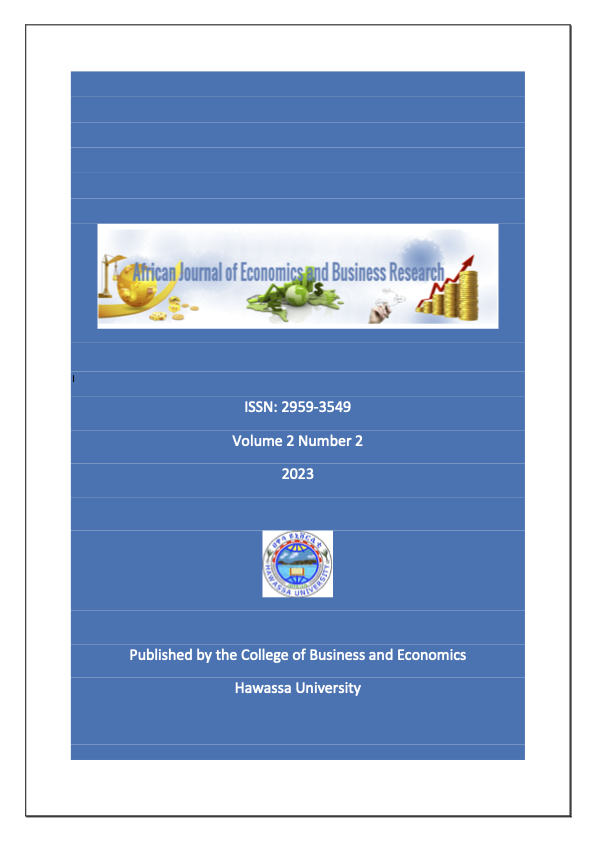Economic Efficiency and Its Determinants of Smallholder Sorghum Producers
The Case of Hidabu Abote District, Ethiopia
Keywords:
Economic efficiency, Ethiopia, Sorghum frontierAbstract
In Ethiopia, increasing productivity and efficiency in crop production could be taken as an important step towards attaining food security. This study was aimed to measure economic efficiency and its determinants of smallholder sorghum producers in Hidabu Abote District, Ethiopia. Two stage sampling technique was used to select 153 sample farmers to collect primary data for 2020/21 production year. Cobb-Douglas stochastic frontier and a two- limit Tobit model were used for data analysis. The result of the stochastic frontier model revealed a statistically significant positive elasticity of labour and oxen power. The estimated mean values of technical, allocative, and economic efficiency were 65.2%, 79.8%, and 51.9%, respectively. On average, there was a yield gap of 8.58 quintals/hectare due to inefficiency. A two-limit Tobit model indicates that education, soil fertility, frequency of extension contacts, sex, farm experience, and livestock ownership contributed significantly and positively to efficiency, while striga weeds and distance from home to farmland had a significant and negative effect on efficiency. Therefore, due attention should be paved to improve soil fertility, livestock rearing, supply, striga resistance varieties, increasing the frequency of extension contact, and expanding of roads to improve the efficiency of sorghum farmers.Downloads
Published
2023-07-26 — Updated on 2023-07-26
Versions
- 2023-07-26 (3)
- 2023-07-26 (2)
- 2023-07-26 (1)
Issue
Section
Articles
License
Copyright (c) 2023 African Journal of Economic and Business Research

This work is licensed under a Creative Commons Attribution 4.0 International License.
This is an Open Access article distributed under the terms of the Creative Commons Attribution License (http://creativecommons.org/ licenses/by/4.0/), which permits unrestricted use, distribution, and reproduction in any medium, provided the original work is properly cited. The terms on which this article has been published allow the posting of the Accepted Manuscript in a repository by the author(s) or with their consent.
How to Cite
Economic Efficiency and Its Determinants of Smallholder Sorghum Producers: The Case of Hidabu Abote District, Ethiopia. (2023). African Journal of Economic and Business Research, 2(2). https://journals.hu.edu.et/hu-journals/index.php/ajebr/article/view/814

